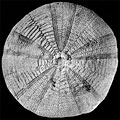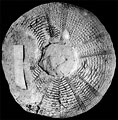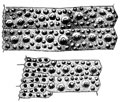The Echinoid Directory
Dumblea Cragin, 1893, p. 150
| Diagnostic Features |
|
|---|---|
| Distribution | Lower Cretaceous (Albian), USA, Mexico. |
| Name gender | feminine |
| Type | Dumblea symmetrica Cragin, 1893, p. 150, by monotypy. |
| Species Included |
|
| Classification and/or Status |
|
| Remarks |
|



